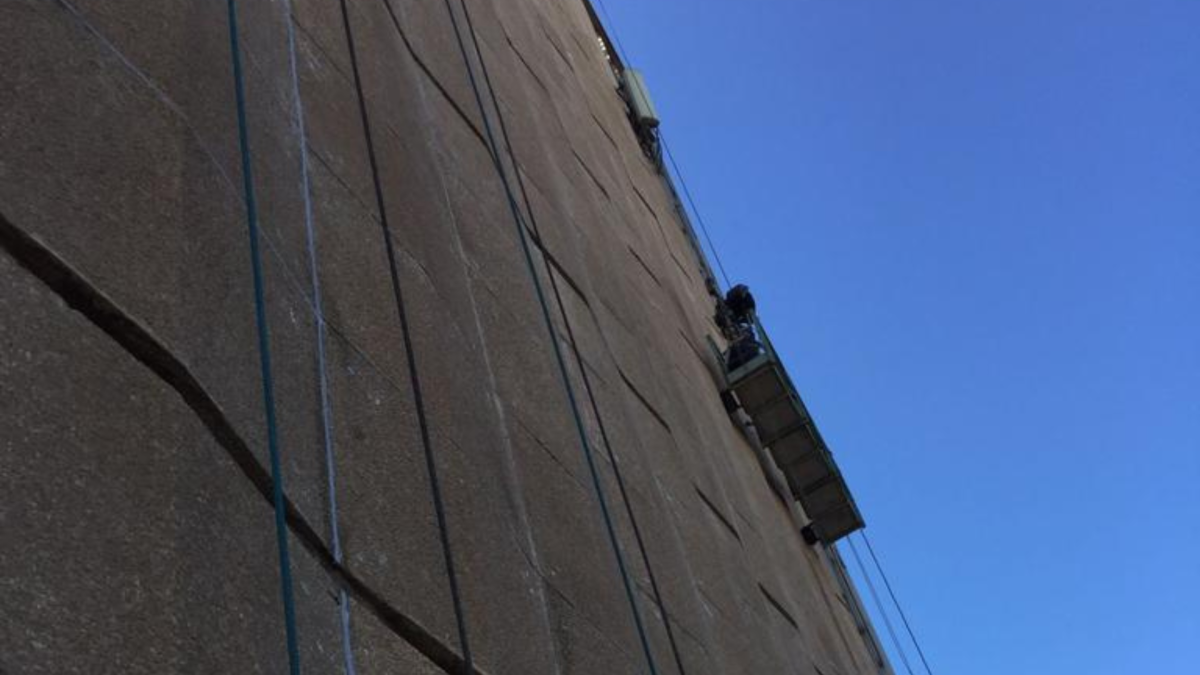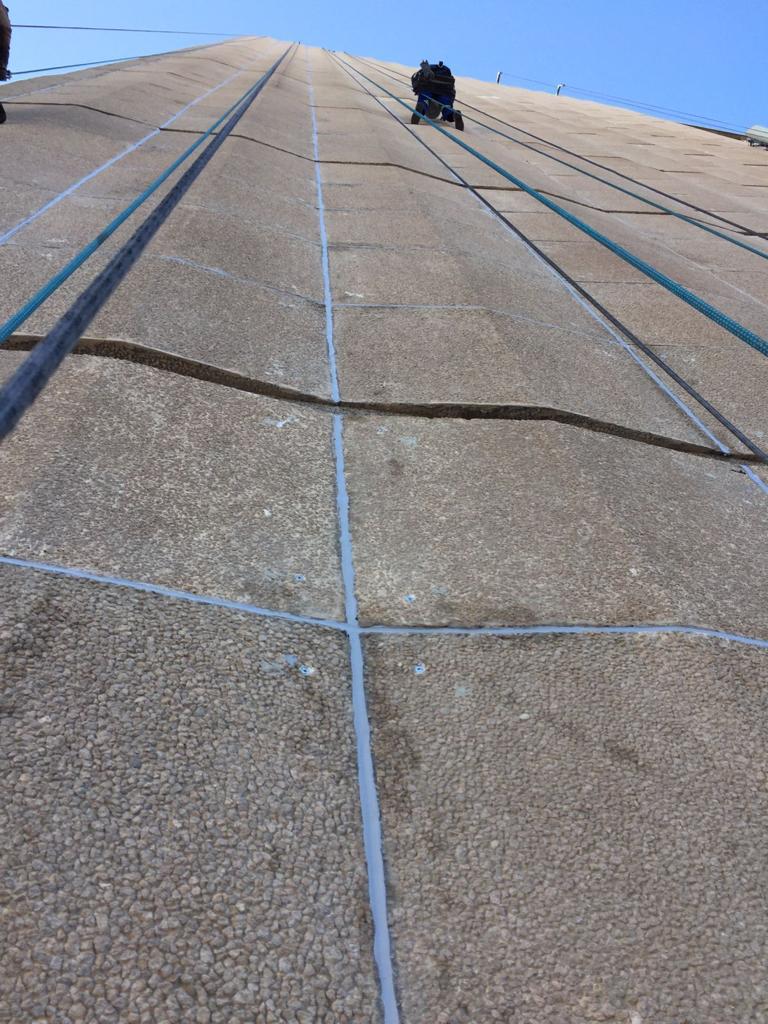

By Eamonn Ryan
Repairs to the external façade of a commercial development in De Korte Street in Braamfontein, Johannesburg, has been successfully completed by Citi-Con, a leading concrete repair specialist. It was an extensive and technically complex undertaking that entailed repairing many thousands of concrete panels that constitute the face of the building.
“The entire façade consists of 7 500 panels varying in condition. Before we could repair the concrete panels, we had to secure them with new anchors. By the time that we had completed this aspect of the works programme, we had secured 24 000 bolts into the concrete substrate. Both high access and rope access systems were used for this aspect of the work scope. This approach enabled us to deploy more staff on the project due to tight project timelines,” Andre Vermeulen, Managing Director of Citi-Con, says.
The process started by determining the gap between the façade panel and the concrete substrate. Workers then drilled about 100mm-long and 12mm-diameter holes in the junction of the panels into which engineering anchors were inserted. They were fixed without placing unnecessary strain on the concrete panels.
Another imported anchor brand was initially specified for this project. However, Vermeulen and his team identified an alternative of a similar design and specification that could be obtained from the supplier quicker. Three days were shaved off the construction schedule by using these engineering anchors.
Once secure, the surface of the concrete panels was prepared for the repair work, with oil and grit stains removed using a high-pressure jet spray. This achieved a uniform colour across all the concrete panels.
The repairs were undertaken using rope-access systems. They provide a faster and more efficient means of undertaking the work scope. This is in addition to being more cost-effective solutions than installing tons of scaffolding around the structure to gain access to the work area. They are also less intrusive and, importantly, safer systems for the public using the public walkway. Certainly, costs and resources were also saved by eliminating the need for extra safety measures that would have to be implemented to protect the public had scaffolding been used on this project.
Small holes in the surface of the concrete panels were repaired using a general repair mortar wherever necessary, achieving a consistent finish to that of a minimum medium grit abrasive paper.
Minor cracks were repaired with a low viscosity epoxy adhesive according to the manufacturer’s specification. Broken and spalled edges were repaired and rebuilt to their original profiles using a general repair mortar.
The team then repaired the joints, reaming out existing material and replacing it with an elastomeric sealant complete polyethylene foam rod. Vermeulen says that a fourth occupational health and safety (OH&S) officer was deployed to the project to complement those of the client. “We wanted to make sure that the public, the client’s employees and the various representatives of the professional team were always safe while we repaired the façade. This was a top priority for the client and professional team, and certainly one of the many reasons for Citi-Con being appointed to undertake the repair work. Our team has extensive experience working at heights such as these to deliver quality workmanship in a healthy and safe manner,” he concludes.

